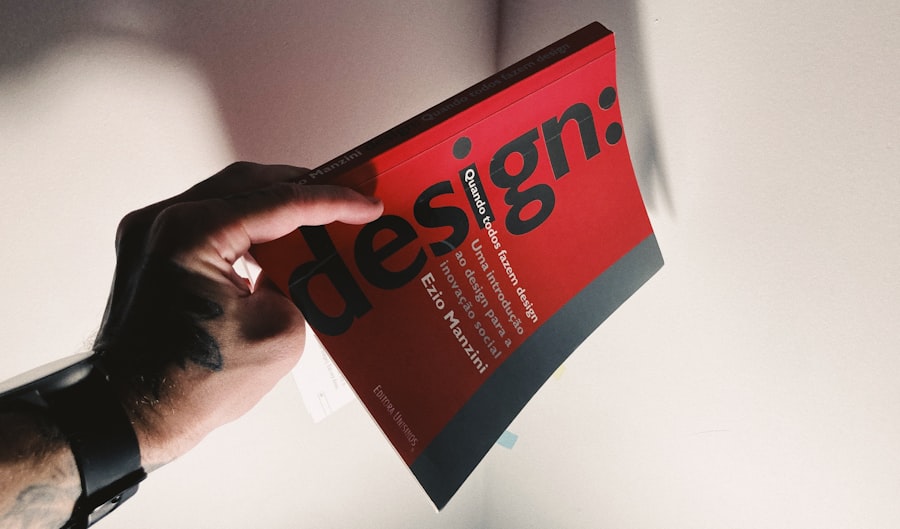A robust portfolio is the cornerstone of any successful freelance web designer’s career. It serves as a visual resume, showcasing not only your technical skills but also your unique design aesthetic and problem-solving abilities. When curating your portfolio, it’s essential to include a diverse range of projects that highlight your versatility.
For instance, if you have experience in e-commerce, corporate websites, and personal blogs, ensure that each category is represented. This variety demonstrates to potential clients that you can adapt your design approach to meet different needs and objectives. Moreover, the presentation of your portfolio is just as important as the work itself.
A well-organized, visually appealing portfolio can make a significant difference in how your work is perceived. Consider using a clean layout that allows your projects to shine without unnecessary distractions. Each project should include a brief description outlining the client’s goals, your design process, and the results achieved.
Including metrics, such as increased traffic or improved user engagement, can provide tangible evidence of your effectiveness as a designer. Additionally, incorporating testimonials from satisfied clients can further enhance your credibility and attract new business.
Key Takeaways
- Building a strong portfolio is essential for showcasing your skills and attracting potential clients.
- Networking and building client relationships is crucial for gaining referrals and repeat business.
- Staying updated with the latest web design trends and technologies is important for staying competitive in the industry.
- Time management and setting realistic goals are key to maintaining productivity and avoiding burnout as a freelancer.
- Pricing and negotiating contracts require careful consideration to ensure fair compensation for your work.
Networking and Building Client Relationships
Networking is an indispensable aspect of freelancing that can significantly impact your success as a web designer. Building relationships within the industry not only opens doors to potential clients but also fosters collaborations that can lead to exciting projects. Attend industry conferences, workshops, and local meetups to connect with other professionals.
Engaging in online communities, such as design forums or social media groups, can also be beneficial. By actively participating in discussions and sharing your insights, you position yourself as a knowledgeable resource, which can lead to referrals and new opportunities. Once you establish connections, nurturing these relationships is crucial.
Regular communication with past clients can keep you top-of-mind for future projects. Sending personalized follow-up emails or sharing relevant articles can demonstrate your ongoing interest in their business. Additionally, consider offering value beyond your design services; for example, you might provide insights on digital marketing trends or suggest tools that could enhance their online presence.
By positioning yourself as a trusted advisor rather than just a service provider, you can cultivate long-term relationships that lead to repeat business and referrals.
Staying Updated with Latest Web Design Trends and Technologies
The web design landscape is constantly evolving, driven by advancements in technology and changing user preferences. To remain competitive, it’s essential to stay informed about the latest trends and tools in the industry. Subscribing to design blogs, following influential designers on social media, and participating in webinars can help you keep your skills sharp and your knowledge current.
For instance, understanding the principles of responsive design is no longer optional; it’s a necessity as more users access websites via mobile devices. In addition to design trends, familiarity with emerging technologies can set you apart from other freelancers. For example, knowledge of CSS Grid and Flexbox can enhance your ability to create dynamic layouts that adapt seamlessly across devices.
Furthermore, being proficient in content management systems like WordPress or Shopify can expand your service offerings and attract a broader client base. By continuously learning and adapting to new technologies, you not only improve your skill set but also position yourself as a forward-thinking designer who can deliver innovative solutions.
Time Management and Setting Realistic Goals
Effective time management is critical for freelancers who often juggle multiple projects simultaneously. Establishing a structured schedule can help you allocate time efficiently while ensuring that deadlines are met without compromising quality. Tools like Trello or Asana can assist in organizing tasks and tracking progress.
By breaking down larger projects into manageable tasks with specific deadlines, you can maintain focus and avoid feeling overwhelmed. Setting realistic goals is equally important in managing your workload effectively. It’s easy to underestimate the time required for a project, especially when faced with tight deadlines or complex requirements.
To counter this tendency, consider using the SMART criteria—Specific, Measurable, Achievable, Relevant, and Time-bound—when defining your goals. For example, instead of setting a vague goal like “improve my design skills,” aim for “complete an online course on UX design by the end of the month.” This approach not only clarifies your objectives but also provides a clear roadmap for achieving them.
Pricing and Negotiating Contracts
Determining how to price your services can be one of the most challenging aspects of freelancing. Various factors come into play, including your level of experience, the complexity of the project, and market rates in your area. Researching what other freelancers charge for similar services can provide valuable insights into setting competitive rates.
Additionally, consider whether you want to charge hourly or offer fixed project rates; each has its advantages depending on the nature of the work. Negotiating contracts is another critical skill for freelancers. A well-drafted contract protects both you and your client by clearly outlining the scope of work, payment terms, and deadlines.
When discussing pricing with potential clients, be transparent about what is included in your services and be prepared to justify your rates based on the value you provide. For instance, if a client expresses concern about budget constraints, you might offer different package options that allow them to choose a solution that fits their needs while still ensuring fair compensation for your work.
Marketing and Promoting Your Services
Effective marketing is essential for attracting clients and growing your freelance web design business. A strong online presence is crucial; this includes having an updated website that showcases your portfolio and services clearly. Utilize search engine optimization (SEO) techniques to improve visibility in search results, making it easier for potential clients to find you.
Additionally, consider creating valuable content related to web design—such as blog posts or tutorials—that can establish you as an authority in the field while driving traffic to your site. Social media platforms also offer powerful marketing opportunities for freelancers. Sharing your work on platforms like Instagram or Behance allows you to reach a wider audience while engaging with potential clients directly.
Regularly posting updates about completed projects or sharing insights into your design process can help build a following and generate interest in your services. Furthermore, leveraging platforms like LinkedIn for professional networking can connect you with businesses seeking web design expertise.
Managing Finances and Taxes as a Freelancer
Freelancing comes with unique financial responsibilities that require careful management to ensure long-term sustainability. Keeping track of income and expenses is vital; using accounting software like QuickBooks or FreshBooks can simplify this process by automating invoicing and expense tracking. Regularly reviewing your financial statements will help you understand cash flow patterns and identify areas where you may need to adjust spending or increase revenue.
Tax obligations are another critical aspect of managing finances as a freelancer. Unlike traditional employees who have taxes withheld from their paychecks, freelancers must set aside funds for tax payments throughout the year. Familiarizing yourself with local tax laws and regulations is essential; consider consulting with an accountant who specializes in freelance taxation to ensure compliance and maximize deductions available for business expenses.
This proactive approach not only alleviates stress during tax season but also helps you maintain financial health throughout the year.
Continuous Learning and Skill Development
In an industry as dynamic as web design, continuous learning is not just beneficial; it’s essential for staying relevant and competitive. The rapid pace of technological advancements means that skills can quickly become outdated if not regularly updated. Engaging in ongoing education through online courses, workshops, or certifications can enhance your expertise and introduce you to new methodologies or tools that improve your workflow.
Moreover, seeking feedback from peers or mentors can provide valuable insights into areas for improvement. Participating in design critiques or joining professional organizations can foster an environment of learning where you can exchange ideas and best practices with others in the field. Embracing a mindset of lifelong learning not only enriches your skill set but also positions you as an adaptable designer capable of meeting evolving client needs in an ever-changing digital landscape.
If you are interested in learning more about web design freelance, you may want to check out this article on uprankerz.com. This article provides valuable insights and tips for freelancers looking to succeed in the competitive field of web design. It covers topics such as finding clients, setting rates, and building a strong portfolio. By reading this article, you can gain a better understanding of what it takes to thrive as a freelance web designer.
FAQs
What is web design freelance?
Web design freelance refers to the practice of working as a self-employed individual or contractor, providing web design services to clients on a project-by-project basis. Freelance web designers typically work remotely and have the flexibility to choose their own clients and projects.
What services do web design freelancers offer?
Web design freelancers offer a range of services including website design, website development, user experience (UX) design, user interface (UI) design, responsive design, and website maintenance. They may also offer additional services such as graphic design, branding, and search engine optimization (SEO).
How do web design freelancers find clients?
Web design freelancers find clients through various channels including online freelancing platforms, social media, networking events, referrals, and their own professional website or portfolio. Building a strong online presence and showcasing a portfolio of past work is essential for attracting clients.
What are the benefits of hiring a web design freelancer?
Hiring a web design freelancer offers several benefits including cost-effectiveness, flexibility, personalized attention, and access to specialized skills. Freelancers often have lower overhead costs compared to design agencies, and they can provide a more personalized and flexible approach to each project.
What skills are required to become a successful web design freelancer?
Successful web design freelancers typically possess a combination of technical skills such as proficiency in HTML, CSS, and JavaScript, as well as design skills including knowledge of design principles, typography, and color theory. Additionally, strong communication, time management, and business skills are essential for managing client relationships and running a successful freelance business.


